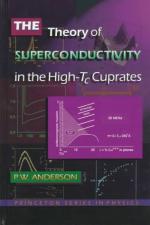|
This section contains 1,046 words (approx. 4 pages at 300 words per page) |

|
During the early 1900s, the Dutch physicist, Heike Kamerlingh Onnes carried out a series of studies on low temperature phenomena. The most striking result he obtained was the liquefaction of helium gas in 1908, the last gas to be liquefied.
After accomplishing the liquefaction of helium, Kamerlingh Onnes turned his attention to a study of the behavior of materials at the near-absolute zero temperatures of liquid helium. Perhaps his most startling discovery was that of superconductivity, the tendency of a substance to lose all resistance to the flow of electrical current. Kamerlingh Onnes observed that the metals he studied each became superconducting at some characteristic temperature, which he referred to as the metal's transition temperature. He also noted that the imposition of an external magnetic field could eliminate superconductivity in a metal, even below its transition temperature.
The property of superconductivity has some obvious practical applications. In most electrical...
|
This section contains 1,046 words (approx. 4 pages at 300 words per page) |

|


